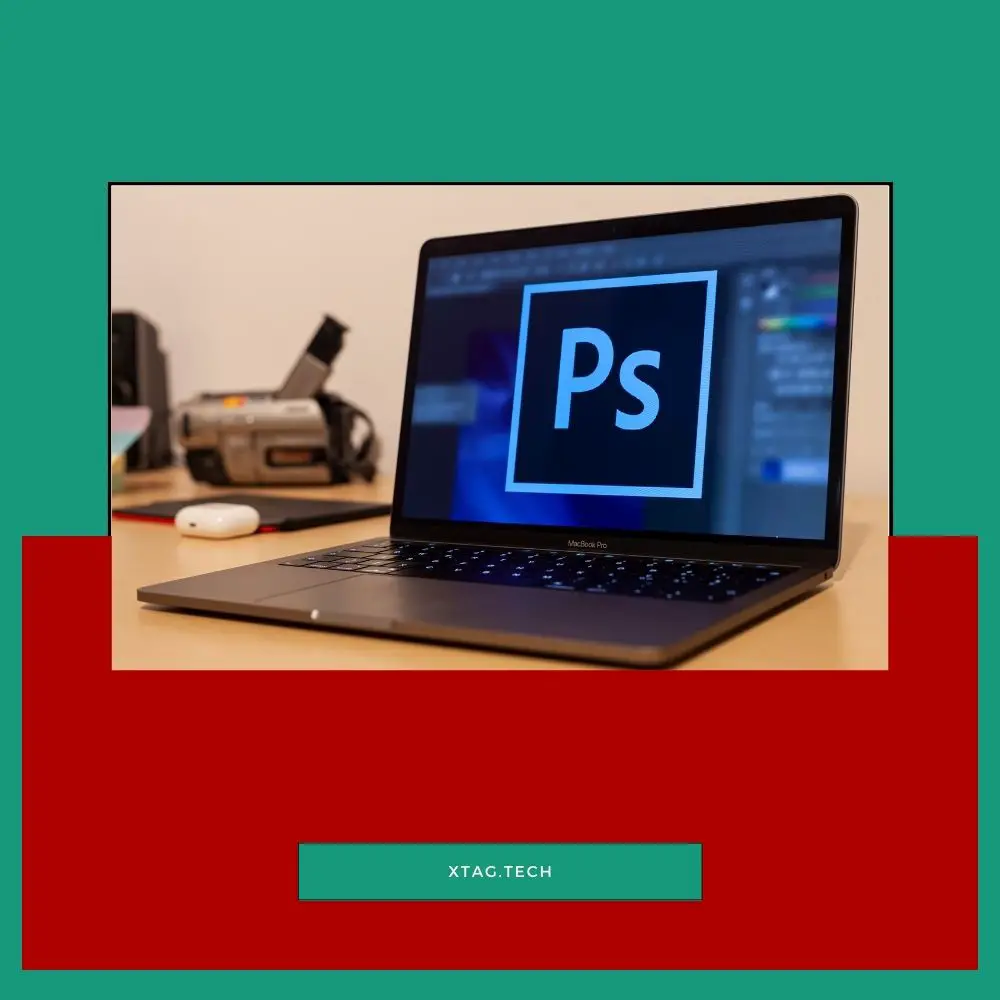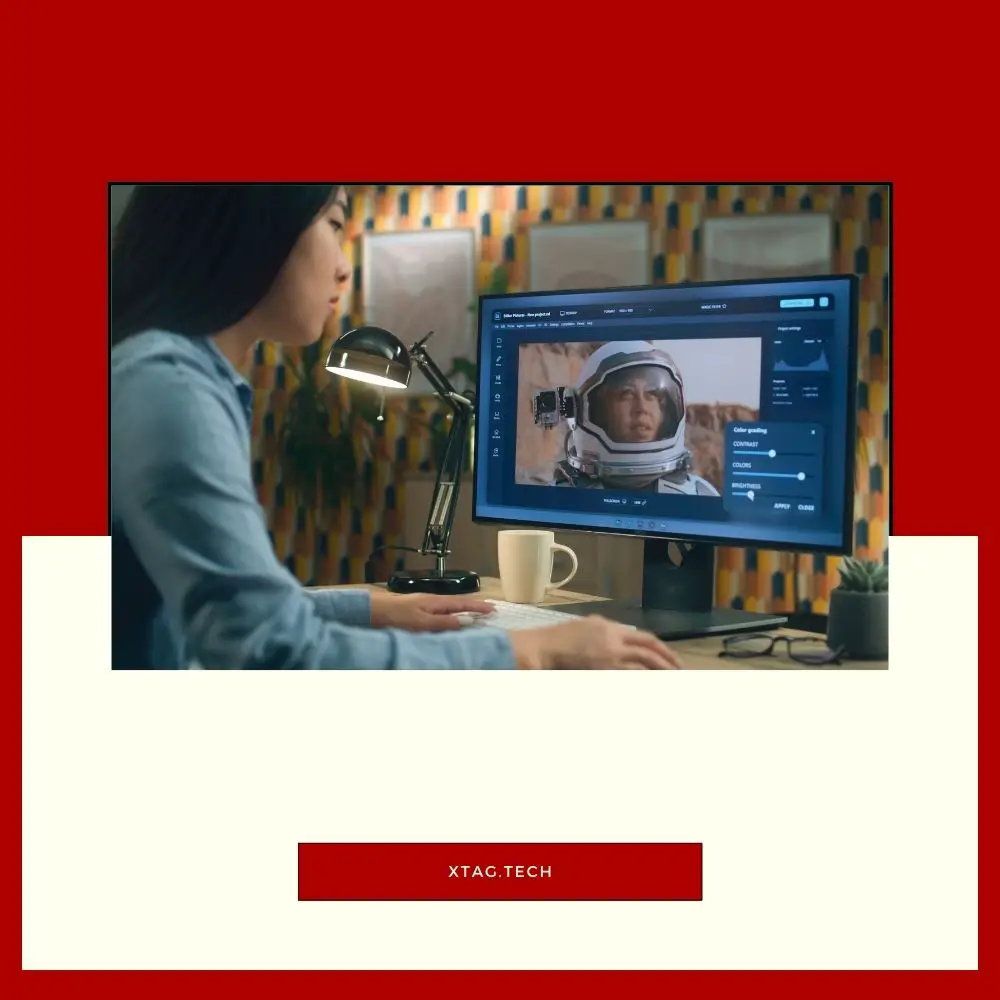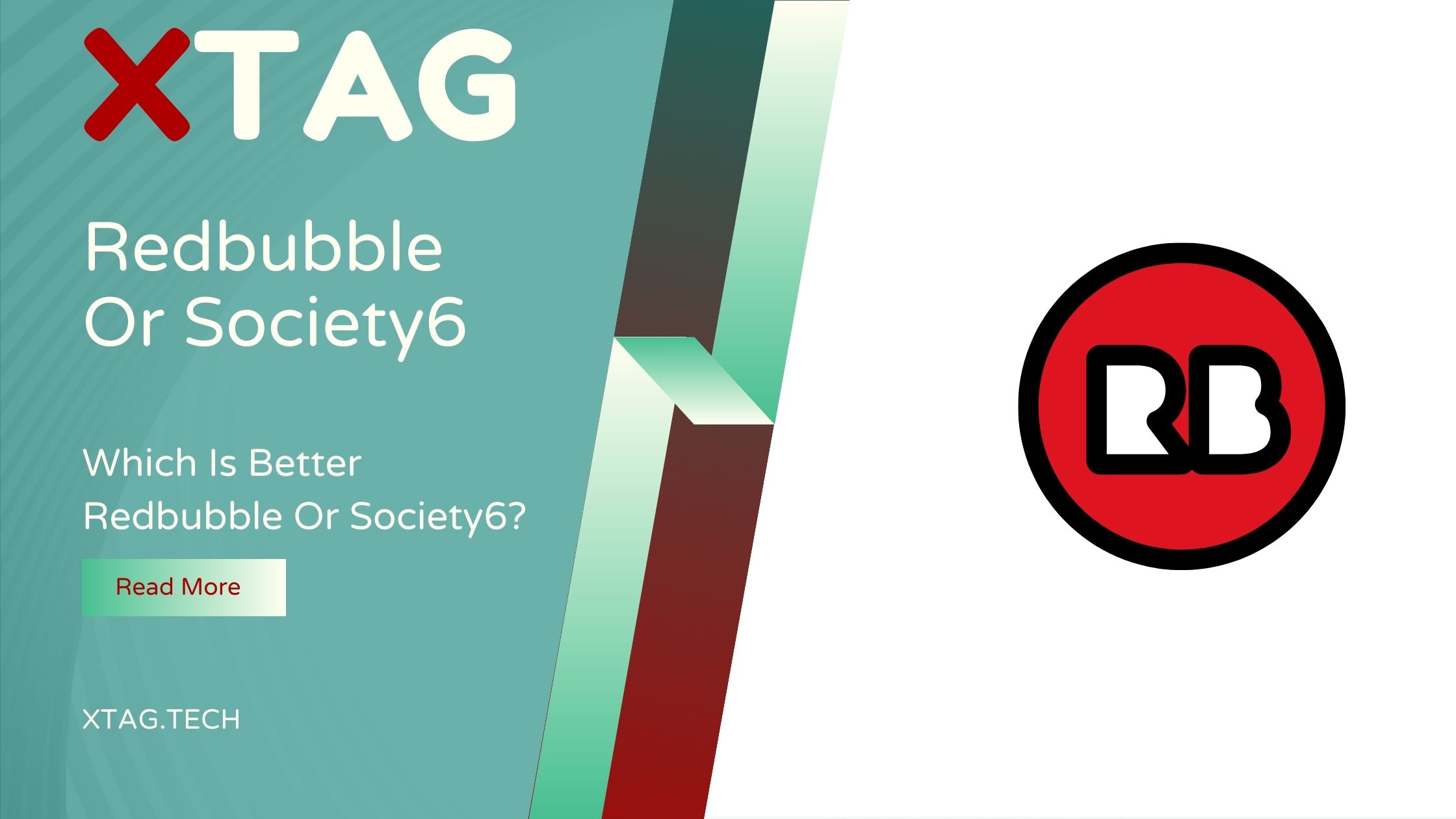Custom apparel and print-on-demand services have gained immense popularity in recent years, allowing individuals to express themselves through unique designs on various products. Two prominent players in this field are Teespring and Redbubble. These platforms empower artists, designers, and entrepreneurs to showcase their creativity and monetize their art. In this article, we’ll compare Teespring and Redbubble, exploring their features, quality of products, customization options, pricing structures, marketing support, community engagement, and more.
This comprehensive analysis aims to help creators make an informed decision about which platform best aligns with their goals and aspirations. Stay tuned as we delve deeper into the intricacies of these platforms, revealing the nuances that can significantly impact your print-on-demand journey. Let’s get started by understanding the core offerings and business models of Teespring and Redbubble.
Comparison of Platforms
To comprehend the advantages and disadvantages of Teespring and Redbubble, it’s essential to grasp their fundamental business models and core offerings.

Teespring Empowering Individual Creators
Teespring primarily operates on a creator-centric model, focusing on empowering individual creators to design, customize, and sell a wide array of products. The platform offers a user-friendly design tool that facilitates the creation of custom merchandise, including apparel, home decor, and accessories.
Pros
- Ease of Use: Teespring provides an intuitive design interface, making it accessible for both seasoned designers and newcomers.
- Product Range: The platform offers a broad range of products, allowing creators to diversify their offerings.
- Simplified Marketing: Teespring offers simplified marketing tools, enabling creators to promote their products effortlessly.
Cons
- Limited Marketplace Exposure: While Teespring provides customization options, its marketplace exposure might be more limited compared to some other platforms.
Redbubble: An E-commerce Marketplace for Artists

Redbubble, on the other hand, functions as an e-commerce marketplace that connects artists and designers with a vast audience seeking unique and artistic products. Artists can upload their designs, which are then printed on various products, from apparel to stationery.
Pros:
- Diverse Audience: Redbubble boasts a large and diverse customer base actively seeking artistic designs.
- Global Reach: The platform provides global shipping, allowing creators to reach a broad international audience.
- Community Engagement: Redbubble fosters a strong community of artists, encouraging collaboration and networking.
Cons:
- High Competition: Due to its open marketplace model, there’s high competition, making it challenging to stand out amidst numerous designs.
In summary, Teespring emphasizes empowering creators to design and market their products, while Redbubble serves as a marketplace for artists to showcase their designs to a broader audience. Your choice depends on your preferences as a creator and your target market. In the following sections, we’ll delve into more aspects of these platforms to aid your decision-making process.
Quality of Products
The quality of the products is a crucial factor when considering a print-on-demand platform. Creators want their designs to be displayed on high-quality items that will satisfy their customers. Let’s assess the quality of products offered by both Teespring and Redbubble.
Teespring Focused on Quality and Durability
Teespring maintains a reputation for delivering products of satisfactory quality. They prioritize quality materials and printing techniques to ensure that designs look vibrant and last through numerous washes and wears. Commonly used materials for apparel include combed and ring-spun cotton, resulting in soft and comfortable garments.

Pros:
- Quality Assurance: Teespring employs stringent quality control measures to ensure that products meet industry standards.
- Printing Techniques: Utilizes advanced printing methods like direct-to-garment (DTG) for sharp, detailed designs.
- Material Variety: Offers a range of materials, ensuring customers have options based on their preferences.
Cons:
- Occasional Variation: Some customers may experience slight variations in color or print quality, though Teespring actively addresses these issues through customer support.
Redbubble: Diverse Selection with Quality Assurance
Redbubble is known for offering a wide variety of products, and they maintain a commitment to delivering quality. They partner with a network of printers to fulfill orders, ensuring consistent quality across their extensive product range. The printing techniques employed by Redbubble include digital printing for vivid and durable designs.
Pros:
- Product Diversity: Redbubble offers an extensive range of products, from apparel to home decor, all meeting their quality standards.
- Quality Assurance: The platform emphasizes maintaining high-quality standards, making customer satisfaction a priority.
- Environmentally Friendly: Redbubble prioritizes eco-friendly and sustainable production processes.
Cons:
- Occasional Print Imperfections: Like any printing process, there may be occasional minor imperfections in the print, but Redbubble’s customer service is responsive in resolving such issues.
In summary, both Teespring and Redbubble prioritize delivering quality products to customers. Teespring focuses on ensuring durability and vibrant designs through a variety of materials and printing techniques, while Redbubble offers a diverse product range while maintaining a strong commitment to quality and sustainability. The decision on which platform to choose may come down to your specific product preferences and the kind of quality you want to offer to your audience. Next, we’ll explore design and customization options on both platforms.
Design and Customization

The design and customization options offered by a print-on-demand platform play a significant role in attracting creators and engaging customers. Let’s delve into the design tools and customization capabilities provided by Teespring and Redbubble.
Teespring prioritizes ease of use and accessibility in its design tool. The platform offers a simple and intuitive interface that allows creators, even those without extensive design experience, to bring their ideas to life. Creators can easily upload designs, add text, adjust sizes, choose colors, and position elements to create a product that matches their vision.
Pros:
- Intuitive Design Tool: Teespring’s design tool is user-friendly, making it easy for creators to navigate and design products.
- Design Templates: Provides ready-made design templates for quick customization and inspiration.
- Design Preview: Offers a preview feature to visualize the final product before it goes live.
Cons:
- Limited Advanced Features: Advanced designers may find the tool somewhat restrictive in terms of intricate design elements.
Redbubble offers a robust design and customization interface that caters to the artistic community. Creators can upload high-resolution designs and optimize them for various products. The platform provides tools to adjust colors, sizes, and placements to ensure the design looks perfect on the intended item.
Pros:
- Design Flexibility: Redbubble’s design tool offers more advanced customization options, enabling fine-tuning for the desired artistic effect.
- High-Resolution Uploads: Creators can upload high-resolution images, preserving the quality of intricate designs.
- Artistic Community: Attracts artists due to its focus on artistic expression and design intricacies.
Cons:
- Learning Curve: The wide array of features may have a steeper learning curve for beginners compared to Teespring’s simpler interface.
In summary, Teespring’s design tool is geared towards simplicity and ease of use, making it suitable for a wide range of creators. On the other hand, Redbubble offers a more intricate design experience, appealing to artists and designers looking for comprehensive customization options. The choice between the two would depend on your design preferences and comfort with the level of design complexity. Next, we’ll delve into the pricing structures and profitability on both platforms.
Pricing and Profitability

Understanding the pricing structures and how they impact potential profitability is crucial for creators aiming to monetize their designs effectively. Let’s compare the pricing models of Teespring and Redbubble and how they influence the profit margins for creators.
Teespring employs a straightforward pricing model where creators set the base price for their products, allowing them to determine their profit margin. The base price covers the production cost, and creators add their desired profit on top of this. The total cost to the customer is the base price plus the profit margin.
Pros:
- Profit Control: Creators have full control over the profit they make by setting their profit margins.
- Transparent Pricing: The platform offers a transparent breakdown of production costs, aiding creators in setting competitive prices.
- Promotional Pricing: Creators can run promotions by adjusting their profit margin, helping drive sales during specific periods.
Cons:
- Limited Pricing Strategies: The pricing strategy is relatively simple compared to platforms that offer more complex pricing options.
Redbubble: Dynamic Pricing Based on Product Type
Redbubble employs a dynamic pricing model where the base cost varies depending on the type of product. Creators choose their desired profit margin, and the platform calculates the final price for each product accordingly. Factors influencing the base cost include the product category, size, and printing complexity.
Pros:
- Versatile Pricing: Creators can adjust profit margins based on product categories, allowing more versatility in pricing strategies.
- Automatic Currency Conversion: Redbubble handles currency conversion for international sales, simplifying the global selling process.
- Bulk Discounts: Offers discounts for bulk purchases, encouraging customers to buy more and potentially increasing sales.
Cons:
- Less Transparent Cost Breakdown: The cost breakdown for production may not be as transparent compared to Teespring’s detailed cost breakdown.
In summary, Teespring offers a more straightforward and transparent pricing model, allowing creators to easily determine their profit margins. On the other hand, Redbubble’s dynamic pricing offers versatility, enabling creators to tailor prices based on product categories and potentially optimize profitability. The best choice depends on your pricing strategy and the level of control you want over pricing and profit margins. Next, let’s discuss marketing and visibility on both platforms.
Marketing and Visibility

Effective marketing and increased visibility are vital components for driving sales and expanding the reach of a creator’s designs. Let’s compare how Teespring and Redbubble support creators in terms of marketing tools and visibility within their respective platforms.
Teespring provides a suite of marketing tools to assist creators in promoting their products effectively. Creators can utilize social media integrations, email marketing, and Google Shopping integration to reach a broader audience. Teespring also offers ad boost options, allowing creators to invest in targeted advertising campaigns within the platform.
Pros:
- Ease of Marketing: Teespring’s integrated marketing tools simplify the process of promoting products across different platforms.
- Google Shopping Integration: Products are automatically listed on Google Shopping, enhancing visibility and potentially attracting more customers.
- Ad Boosting: Creators can boost their products to reach a wider audience through paid advertising.
Cons:
- Limited External Integration: While Teespring offers good in-platform marketing options, external integrations with third-party tools may be limited compared to some other platforms.
Redbubble: Leverage a Built-in Audience
Redbubble provides creators access to a built-in audience actively seeking artistic and unique designs. The platform has a robust search algorithm and categorization, ensuring that products are discoverable by interested buyers. Creators can enhance visibility by using relevant tags and descriptions, optimizing their designs for search visibility within Redbubble.
Pros:
- Access to a Wide Audience: Redbubble’s existing customer base offers a significant advantage, potentially resulting in more natural visibility.
- Search Optimization: Creators can optimize their product listings using tags, titles, and descriptions to improve search visibility.
- Categorized Marketplace: Redbubble’s well-organized marketplace makes it easier for buyers to find specific designs.
Cons:
- Less Direct Marketing Control: While the platform provides visibility, creators have limited control over direct marketing efforts compared to platforms with robust external marketing integrations.
In summary, Teespring equips creators with streamlined marketing tools within the platform, making it easier to promote products across various channels. On the other hand, Redbubble offers access to an existing audience actively searching for unique designs, leveraging its categorization and search optimization features. The choice between the two would depend on your marketing strategy and whether you prefer in-platform tools or a built-in audience. Next, we’ll explore the communities and support systems of both platforms.
Community and Support
Having a strong sense of community and reliable support is crucial for creators, providing them with the assistance and encouragement needed for a successful print-on-demand venture. Let’s compare the community engagement and support systems offered by Teespring and Redbubble.
Teespring offers a supportive creator community through its Creator Education Hub. This platform provides educational resources, tutorials, webinars, and case studies to help creators improve their design skills, marketing strategies, and overall business approach. Creators can also connect with each other through forums and communities.
Pros:
- Educational Resources: The Creator Education Hub equips creators with knowledge and tools to enhance their success on the platform.
- Community Interaction: Creators can engage with fellow community members, seek advice, and share experiences through forums and other community spaces.
Cons:
- Limited Social Interaction: The community aspect may not be as prominently featured compared to some other platforms.
Redbubble prides itself on fostering a strong creative community. The platform has a vibrant artist community where creators can share ideas, collaborate, and find inspiration. Additionally, Redbubble offers forums and groups, allowing creators to connect and engage with each other, facilitating a sense of belonging within the platform.
Pros:
- Active Community: Redbubble’s community actively engages in discussions, collaborations, and art sharing, providing a sense of camaraderie.
- Collaboration Opportunities: Creators can collaborate on projects, boosting creativity and potentially expanding their reach.
- Knowledge Sharing: Forums and groups enable creators to share knowledge, tips, and strategies for success.
Cons:
- Lack of Official Educational Hub: While Redbubble has a community, it might benefit from a centralized educational hub like Teespring’s Creator Education Hub.
In summary, Teespring and Redbubble both offer community engagement opportunities for creators, albeit with slightly different approaches. Teespring focuses on providing educational resources and a platform for creators to share experiences, while Redbubble emphasizes fostering an active creative community where creators can collaborate and gain inspiration. The choice depends on your preference for the type of community engagement and support you value most. Next, we’ll conclude by summarizing the comparison and providing recommendations.
Conclusion
Choosing between Teespring and Redbubble ultimately comes down to your specific needs, preferences, and objectives as a creator. Both platforms offer unique advantages and cater to different types of creators within the print-on-demand industry.
Teespring is ideal for creators looking for a user-friendly platform with simplified pricing and easy-to-use design tools. The focus on marketing integration and transparent pricing makes it a suitable choice for individuals seeking control over their profit margins and marketing strategies.
Redbubble, on the other hand, stands out for its vast community of artists and a diverse range of products. The dynamic pricing model and built-in audience provide a more flexible approach to pricing and potentially offer broader visibility for your designs.
Consider your design complexity, desired level of community engagement, marketing approach, and overall vision for your print-on-demand venture when making a decision. You can even choose to use both platforms simultaneously to leverage the strengths of each.
In conclusion, whether you opt for Teespring or Redbubble, each platform provides a valuable opportunity for creators to showcase their art, connect with a broader audience, and potentially monetize their designs. Assess your goals, explore the features of both platforms, and make an informed decision that aligns with your creative journey and business aspirations.
Next, we’ll address some common questions and concerns that individuals often have when considering print-on-demand platforms like Teespring and Redbubble.
Frequently Asked Questions (FAQs)
Is it possible to sell on both Teespring and Redbubble simultaneously?*
Absolutely! Many creators opt to utilize multiple print-on-demand platforms to expand their reach and potential customer base. Selling on both Teespring and Redbubble simultaneously allows you to diversify your product offerings and take advantage of the unique features each platform offers.
2. Can I use my own designs on Teespring and Redbubble?
Yes, both Teespring and Redbubble allow you to use your own original designs. You can upload your artwork, illustrations, or designs to either platform, customize products, and sell them to a global audience.
3. Which platform offers better profit margins for creators?
Both Teespring and Redbubble allow creators to set their profit margins, giving them control over their earnings. The actual profit margins may vary based on the platform, product type, and pricing strategy you choose. It’s important to analyze the base costs, pricing structures, and your target audience to determine the best platform for maximizing profits.
4. How do I market my products effectively on Teespring and Redbubble?
To market your products effectively, consider utilizing social media, email marketing, influencer collaborations, and other digital marketing strategies. Teespring provides integrated marketing tools within the platform, while Redbubble offers a built-in audience that actively seeks unique designs. Experiment with various marketing approaches to find what works best for your target audience.
5. Are there any restrictions on the types of designs I can upload?
Both Teespring and Redbubble have guidelines regarding copyrighted material, hate speech, violence, and other inappropriate content. Ensure your designs comply with their respective content policies to avoid any issues. Original and unique designs that adhere to their guidelines are typically accepted.
These FAQs address some common concerns creators have when considering print-on-demand platforms like Teespring and Redbubble. If you have more questions, feel free to explore each platform’s FAQs or reach out to their respective support teams. Good luck with your print-on-demand venture!
